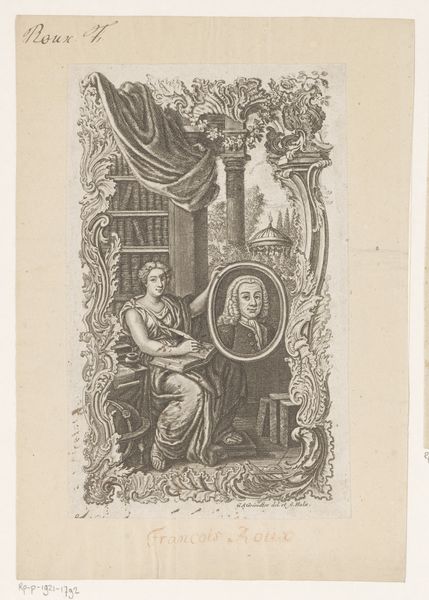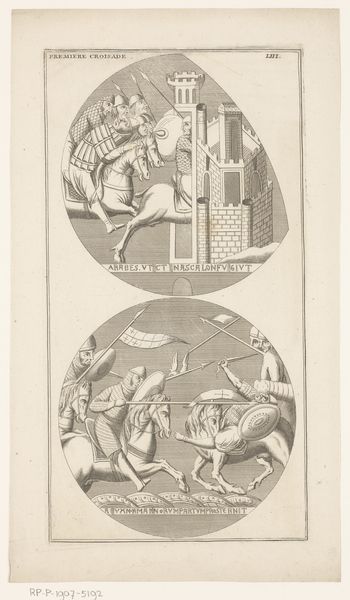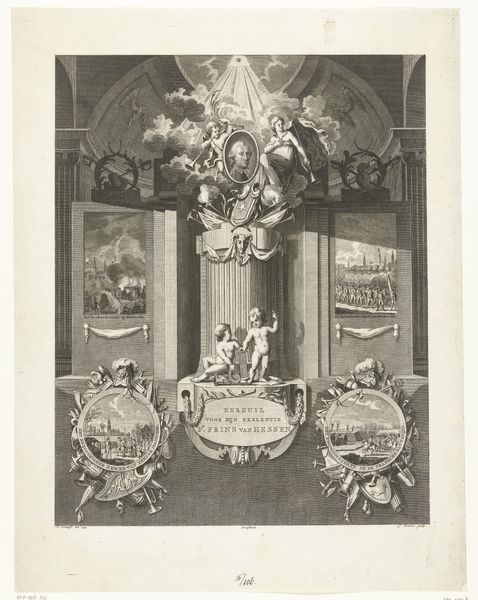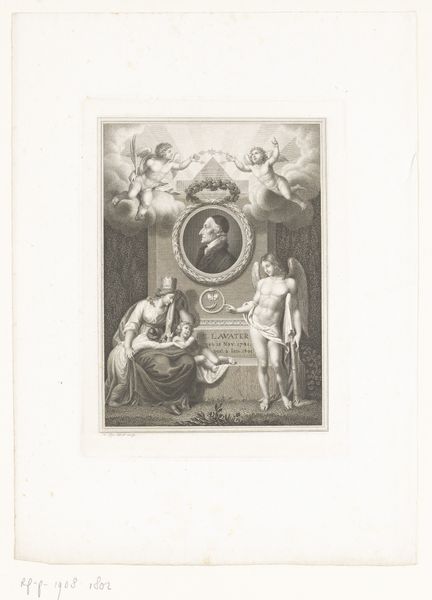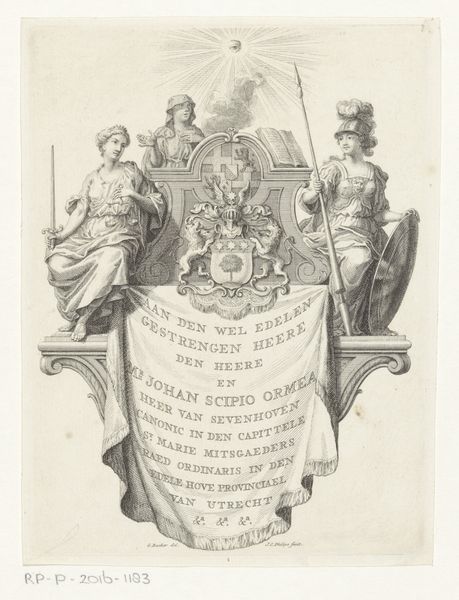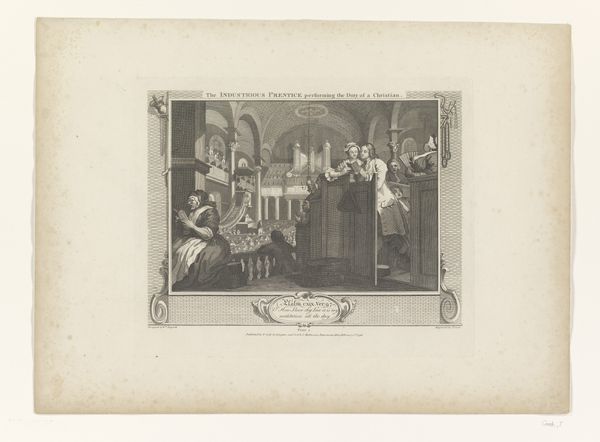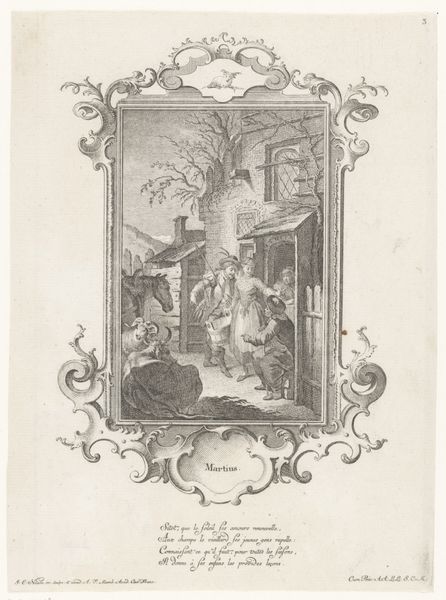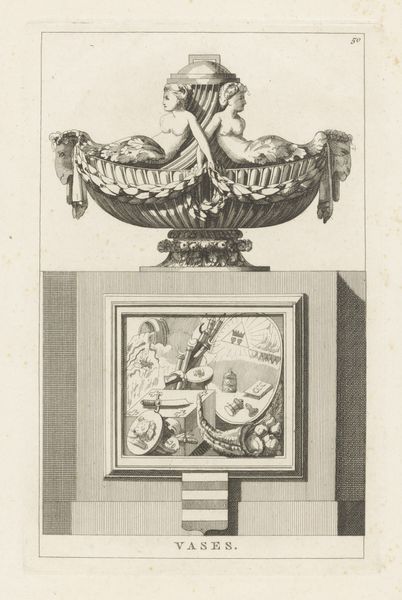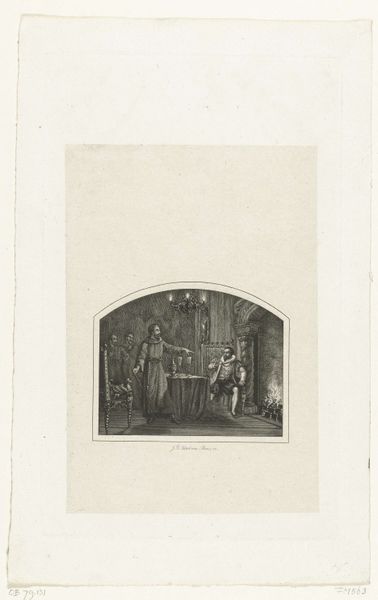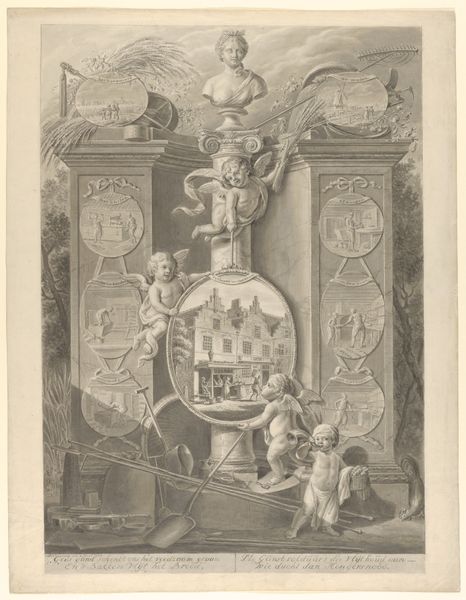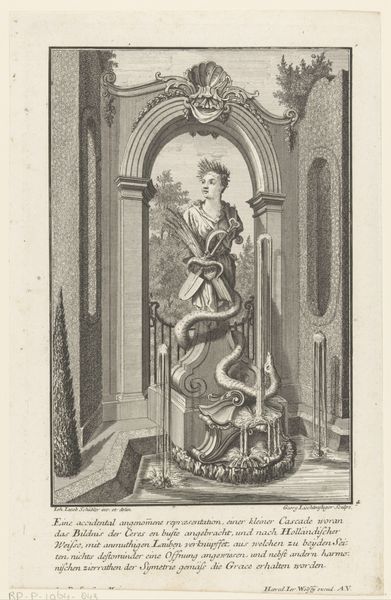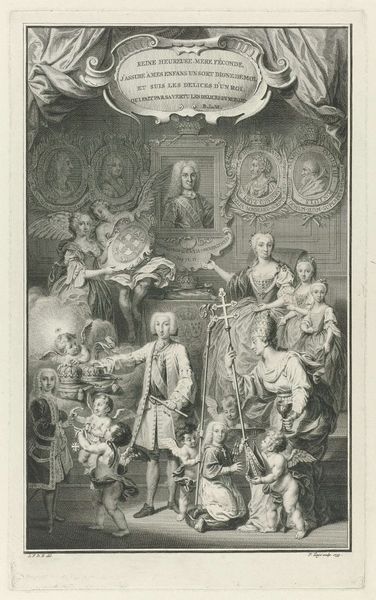
print, engraving
#
portrait
#
neoclacissism
# print
#
old engraving style
#
caricature
#
history-painting
#
engraving
Dimensions: height 359 mm, width 259 mm
Copyright: Rijks Museum: Open Domain
Curator: What an odd juxtaposition, visually. My eye keeps bouncing all over! Editor: You've certainly zeroed in on something about its energy. What we're seeing is Pieter van der Meulen's "Portrait of Tsar Alexander I of Russia," likely from between 1801 and 1803, part of the Rijksmuseum's collection. It's an engraving, a print, layering symbolic elements around the figure of the Tsar. Curator: The old engraving style really lends a unique quality. But it also comes off a bit...I hesitate to say it...cartoony? The house below feels disconnected from Alexander. And there’s something almost aggressively symbolic about the figures flanking him. It’s… disjointed but bold. Editor: It does embrace the Neoclassical spirit of the time. Though filtered, of course, through the lens of Dutch printmaking. It's propaganda, carefully constructed. The building at the bottom, named "Kerzuyl," anchors Alexander to a specific act of generosity – perhaps related to bestowing this property? A connection of ruler and land, ruler and people, even through a material gift. Curator: Oh! See, now that context is delicious. Knowing it signifies generosity makes the house less random and more heartening. But still, those allegorical figures...so severe, so idealized! Editor: It speaks to the ambition of the era. To shape perception. This isn’t simply a portrait; it's an act of nation-building through imagery, framing Alexander as benevolent and powerful. Someone to be looked up to! Note the eagle, the sword, and spear - very telling in their detail of symbolism. Curator: Nation-building as art direction! I do see what you mean about shaping the view through artifice. Yet, there's an enduring strangeness to it all, this blend of the grandiose and the homey, of precise technique and that faintly ridiculous feel. I still like it, somehow. Editor: Perhaps, in its very strangeness, it reveals the complexities inherent in constructing national narratives. Thank you for pointing this out. Curator: No, thank you! My pleasure! It is thought provoking to note the artist's hand at portraying nation and ruler and, perhaps also a touch of his own self-regard.
Comments
No comments
Be the first to comment and join the conversation on the ultimate creative platform.
